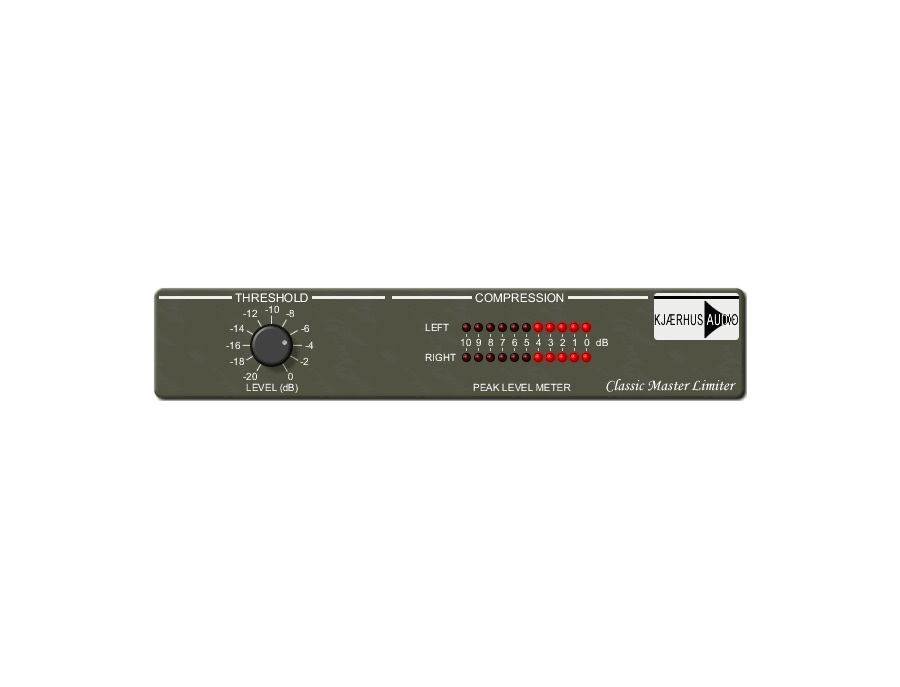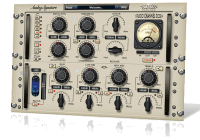| Latest Topics |
| Latest Posts |
| Unanswered Posts |
Kjaerhus Mac
- Band-in-a-Box for Windows
- Band-in-a-Box for Mac
- Other software
International Band-in-a-Box versions - Band-in-a-Box.com
- PG Music User Forums
- sales@pgmusic.com
support@pgmusic.com
Current time is:
Download VST, VST3 for Mac. Download VST, VST3, AAX for Windows. How to install this free software? Downloaded by 6654 users, 160 countries (recent 90 days) Marvel GEQ. Mastering Graphic Equalizer free. Marvel GEQ is a free linear-phase 16-band graphic equalizer plugin that offers you a. Audio compressor limiter software, free download - Audio Compressor, EC Limiter, Audio Compressor, and many more programs.
- Kjaerhus Audio - Golden Compressor GCO-1 1.1 is a very good quality compressor and expander. The program is capable of extracting any analog character. The software is capable of extracting any analog character. It has an open architecture with many adjustments. It is a good choice for real time use in live or studio performances and has high.
- Download Classic Master Limiter - VST plugin designed to enhance the overall level of your final mixes, turn the threshold up or down, and obtain very high compression ratio values without.
One of our representatives will be happy to help you over the phone. Our hours of operation are from 6:00AM to 6:00PM PST (GMT -8) Monday thru Friday, and 8:00AM to 4:00PM PST Saturday. We are closed Sunday. You can also send us your questions via email.
- Tel: 1-800-268-6272 or 1-888-746-8742 (Within USA and Canada)
- Tel: + 800-4746-8742 (Outside USA and Canada where International Freephone service is available - International access codes).
- Email: sales@pgmusic.com
One of our representatives will be happy to help you on our Live Chat or by email. Our hours of operation are from 6:00AM to 6:00PM PST (GMT -8) Monday thru Friday; 8:00AM to 4:00PM PST (GMT -8) Saturday; Closed Sunday.
- Email: support@pgmusic.com
- Web: Tech support
Nomad Factory Blueverb DRV2080
Formats: PC VST & RTAS, Mac VST, RTAS & AU
The world got very excited about convolution reverbs for a couple of years, but it seems that more traditional algorithmic designs are making a comeback. After all, convolution processors are still pretty CPU-hungry, so in situations where you want three or four reverbs in a mix, they can be impractical. Moreover, they don't tend to offer as much flexibility as their older brethren, and although they provide unsurpassed realism, it turns out that real doesn't always mean better, at least in your average pop mix.
The latest entry in the retro reverb stakes comes from Nomad Factory, whose Blueverb DRV2080 is allegedly 'intended to recreate the warm qualities of vintage-style digital reverbs from the '80s'. And this is pretty much exactly what it does. It's not the sort of plug-in that offers endless potential for tinkering; instead, it provides just a few basic controls, enabling you to get a sound fast, without crippling your PC in the process. Control over the reverb itself is limited to seven familiar parameters, all of which do pretty much what you'd expect, and the output can be shaped by a simple two-band EQ.
It's the sound that counts, and to my ears, DRV2080 does a decent job. Although there appears to be only one reverb algorithm, it's flexible enough to deliver smooth long halls and some fairly recognisable plates, as well as more subtle ambiences. None of them is exactly convincing as an emulation of a real acoustic space, but they can work very well on vocals and other sources within a mix. I particularly liked the plate presets, though I found that their usefulness on vocals was limited by a strong tendency to exaggerate sibilants, which the basic two-band EQ didn't really help with. Overall, however, this is a surprisingly versatile plug-in with a likeable, rich sound that's a lot more dense than that of many algorithmic reverbs. CPU load is minimal, and if you're looking for something that will provide an affordable step up from the reverbs bundled with DAWs like Cubase or Pro Tools, this is well worth considering. Sam Inglis
£99 including VAT.
Time & Space Distribution +44 (0)1837 55200.
+44 (0)1837 840080.
Kjaerhus Audio MPL1 Pro
Formats: PC VST

There are quite a lot of high-quality mastering limiters around these days, and it seems that if you want to stand out from the crowd, you have to offer something a bit out of the ordinary. Thus, Sony's Oxford Limiter has its unique Enhance function, while Waves have developed the clever multi-band technology used in their L3.
At first glance, Kjaerhus Audio's MPL1 seems to lack a comparable USP, but closer inspection reveals some very interesting and innovative design features. It's a wide-band, stereo plug-in, and offers all the luxuries you'd expect from a high-end limiter. It uses a look-ahead algorithm and oversamples the incoming audio, enabling it to detect and limit inter-sample peaks. There's excellent level metering, which displays both peak and RMS output levels, and the Pro version includes some helpful additions, such as an input gain control (I know we should all be paying more attention to gain structure in our DAW mixes, but sometimes it's just easier to attenuate the gain on the master channel than to bring every track in your mix down by 3dB!). In terms of the features on offer, the only thing that might be a negative point for some is the relative lack of output dithering options. It's TPDF noise shaping or nothing; I confess I'm unlikely to lose any sleep over that, but the golden-eared might.

So what makes MPL1 special? Two things, as far as I can see. The first is its unusually flexible and musically sympathetic way of setting the limiter release times. There's a manual Release control, but you can also introduce a programme dependent release algorithm. If you do so, the Release control then sets a maximum release time for the programme dependent algorithm, so you can combine the benefits of programme dependent release with the control of a manual system. This isn't so unusual in its own right, but the Pro version goes further. An additional PDR Amount control allows you to introduce a variable amount of programme dependence into the release, while a PDR Time parameter modifies 'the time factor used to identify peaks in the music', and you can also adjust Compression Smoothing, which controls the shape of the transition between hard limiting and the release phase.
The second out of the ordinary feature is, as far as I know, unique to the Pro edition of MPL1, and Kjaerhus say they've applied for a patent to protect it. We're used to being told that stereo linking is essential when using any dynamics process across a stereo mix, in order to prevent the image from wandering, but MPL1 's design challenges this dogma. The idea seems to be that when limiting is triggered by transient peaks in one channel, the audible side-effects of reducing gain in both channels can be noticeable, but that within a short enough time-frame, the disturbance to the stereo image is not. So, what MPL1 Pro allows you to do is, in effect, to set an attack time for stereo linking. This can be varied from 0 to 100 milliseconds. At the former extreme, MPL1 Pro behaves like any other limiter. At the latter, the level in the left channel would need to exceed the threshold for a tenth of a second before limiting in the right channel is triggered.
As you'd expect, higher attack times for stereo linking can tend to make the stereo image unstable, but used with moderation, I think the results bear out the designers' reasoning: momentary limiting in one channel only didn't disrupt overall imaging, even on headphones. That said, on my test material the benefits were pretty subtle — rather more so, for instance, than those of the Enhance function in Sony's Oxford Limiter. Likewise, the effect of the Smooth control is often hard to notice, though in most respects, the flexible release settings provide clear benefits. In general, MPL1 performs flawlessly, and it's one of the most flexible wide-band mastering limiters I've used. At barely $100 for the basic version and under $150 for the Pro version, it's also excellent value for money. Sam Inglis
Standard edition $102.08; Pro edition $136.88. Prices include VAT.
Voxengo Marquis
Format: PC VST
The basic EQs, compressors and effects included in your average DAW program can do a yeoman job, but they often lack flavour while they are doing it. So if you yearn for more upscale effects, but the cash (or credit) is lacking, you could do worse than checking out Voxengo's range. Their Marquis compressor is a step up from the native compressors I've dealt with, even the higher-end versions such as Sonar 's Sonitus Compressor. Voxengo call it a universal compressor since it can be used on individual tracks during mixing, on a buss or, in a pinch, pressed into service as a mastering plug-in. Preset management follows the VST standard, while the right-hand side of the compressor looks and acts like most others, with knobs for Threshold, Ratio, Knee, Attack and Release.

Things get interesting, or at least complex, with the more unusual controls. These include Force, which mixes in a compressed signal with zero release time, and Dry, which allows you to mix the uncompressed signal with the compressed signal to achieve 'parallel' compression. There are also a number of ways to modify the detection and compression algorithms. For instance, the former can be switched between Classic and Round modes, while the plug-in can emulate both a conventional 'feed-forward' design and an optical compressor circuit. You can choose from three different attack and release behaviours, while optional Soft and Sharp modes introduce different varieties of harmonic coloration. You can also engage a phase-linear mode for mastering and other sensitive applications. Switching any single button won't always have a dramatic effect on the sound, but in combination, they are sure to.
Another nice feature is side-chain filtering, with a spectrum analyser to view the results and the ability to listen to the filtered side-chain signal. You can click and drag four breakpoints on a graphical EQ curve, with the Shift, Ctrl and Alt keys providing variable control over the dragging.
Finally, not only does Marquis offer a programme dependent release option, but it allows you to edit the programme dependent 'release contour' in detail. In programme dependent mode, the release time you set manually is treated as a minimum, and the 'release contour' provides three knobs for altering the amount by which the programme-dependence can extend that release time. Raising the values produces a steeper slope, meaning less variation in the release time, while lowering the number straightens the green line to the horizontal, permitting more variation (and hence, on average, a longer release time).
The detailed editing available means that tweakheads can burn up lots of time trying to emulate the sound of their favourite hardware compressors, but for those who want to adjust and move on, there are enough presets and big-picture sculpting tools to get on to the next project quickly. Although Marquis can sound transparent, it can do 'vintage', too, without breaking into a sweat. The drum buss collection provides good starting points, and any preset with 'movement' in the name does just that. They can turn your mild-mannered loop into a seething, pumping thing. Of course, you don't have to mangle sound, and it is easy to add a little glue, sparkle or bass to individual tracks or entire mixes. It is easier to hear it working (in a good way!) than most native DAW compressors, since it doesn't sound like it is straining to affect the sound. Despite its complexity, Marquis manages to stay CPU-friendly, too. This is a plug-in that covers a lot of sonic ground, yet is fairly inexpensive for the quality it provides. Alan Tubbs

$89.95.
Chandler EMI TG12413
Formats: Mac & PC TDM & RTAS
The best-known studios of the '60s and '70s all had their own, identifiable sound, and none more so than Abbey Road. Lots of factors contributed to the unique sonic fingerprint of EMI's in-house studio, from its engineering practices to the shape of the recording rooms and their lush reverb chambers. Among those factors were the numerous pieces of equipment that were custom-built or extensively modified by EMI staff, and of those, the TG-series desks introduced in the late '60s hold pride of place.
Chandler already make hardware compressors, limiters, preamps and channel strips based on the TG-series design, but TG12413 is their first plug-in. Available for Pro Tools LE and TDM on Mac and PC, it emulates the compressor/limiter built into every channel on the TG-series mixers. It's authorised to an iLok key, and installed by the slightly clunky but effective method of copying two DPM-format files into your Pro Tools plug-ins folder.

One glance at the interface tells you that controllability isn't the prime reason for this plug-in's existence. There are only four controls, all of which are stepped and can be moved either by clicking and dragging, or simply by clicking the appropriate number on the scale. The most basic control is a switch that sets whether the plug-in should act as a compressor or a limiter. These modes have fixed attack times of 44 and eight milliseconds respectively, while release time is adjustable using a six-position Recovery switch. In limiter mode, the fastest release available is 50ms and the slowest two seconds, and switching to compressor mode scales these up by about five times.
As is the case in many vintage dynamics processors, there's no Threshold setting. To get more compression, you simply up the input gain to drive the unit harder. On the original unit, the input gain control was rather unconventional and not especially intuitive, and sensibly, Chandler have provided two versions of the plug-in. One is faithful to the original, while the other has a conventional gain control. And, apart from an output gain control, that's it. A retro-style VU meter displays gain reduction: it's not the most helpful visual feedback, but this isn't the sort of processor you'd use in situations where you need absolute precision. Its raison d'être is to add character to your tracks, and boy, does it do that.
Kjaerhus For Macbook Pro
I can't ever recall testing a plug-in compressor that can match TG12413 for sheer punchiness. In compressor mode, it can pump like a nodding donkey in an oil field, but I found I used it more in limiter mode, where the snappier time constants seemed to work for almost everything. The attack is just slow enough to let transients through, so it can add substance to a drum track without losing the initial 'crack' of the snare. Alternatively, it can nail a vocal to the front of the mix without sucking the life from it. Buying TG12413 alone won't turn your mixes into Dark Side Of The Moon, but you may well experience moments when it really does seem to bring a little slice of Abbey Road into your life. Sam Inglis
TDM version £417; RTAS version £293. Prices include VAT.
Unity Audio +44 (0)1440 785843.
+44 (0)1440 785845.
